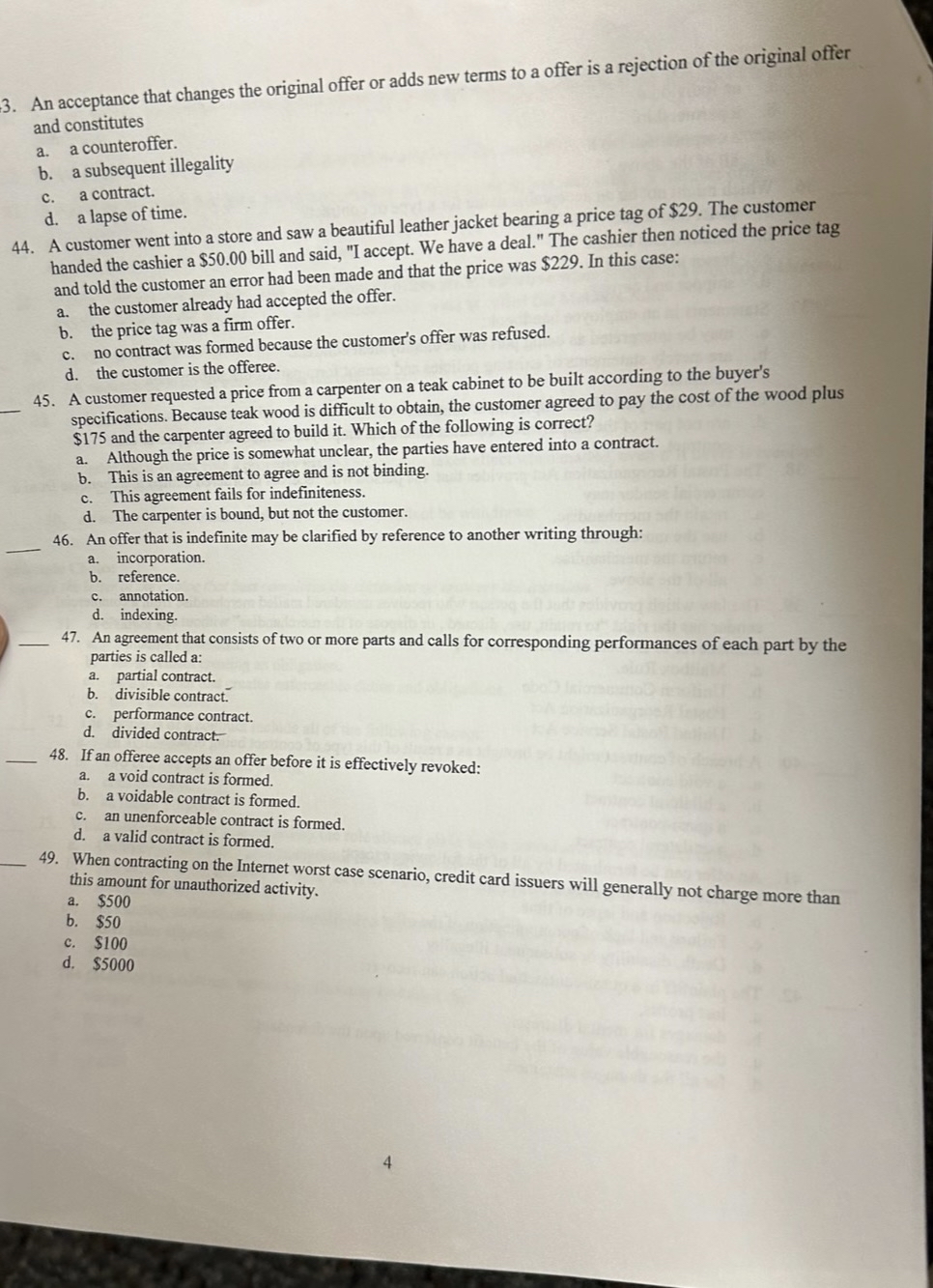Answered step by step
Verified Expert Solution
Question
1 Approved Answer
An acceptance that changes the original offer or adds new terms to a offer is a rejection of the original offer and constitutes a .
An acceptance that changes the original offer or adds new terms to a offer is a rejection of the original offer and constitutes
a a counteroffer.
b a subsequent illegality
c a contract.
d a lapse of time.
A customer went into a store and saw a beautiful leather jacket bearing a price tag of $ The customer handed the cashier a $ bill and said, "I accept. We have a deal." The cashier then noticed the price tag and told the customer an error had been made and that the price was $ In this case:
a the customer already had accepted the offer.
b the price tag was a firm offer.
c no contract was formed because the customer's offer was refused.
d the customer is the offeree.
A customer requested a price from a carpenter on a teak cabinet to be built according to the buyer's specifications. Because teak wood is difficult to obtain, the customer agreed to pay the cost of the wood plus $ and the carpenter agreed to build it Which of the following is correct?
a Although the price is somewhat unclear, the parties have entered into a contract.
b This is an agreement to agree and is not binding.
c This agreement fails for indefiniteness.
d The carpenter is bound, but not the customer.
An offer that is indefinite may be clarified by reference to another writing through:
a incorporation.
b reference.
c annotation.
d indexing.
An agreement that consists of two or more parts and calls for corresponding performances of each part by the parties is called a:
a partial contract.
b divisible contract.
c performance contract.
d divided contract
If an offeree accepts an offer before it is effectively revoked:
a a void contract is formed.
b a voidable contract is formed.
c an unenforceable contract is formed.
d a valid contract is formed.
When contracting on the Internet worst case scenario, credit card issuers will generally not charge more than this amount for unauthorized activity.
a $
b $
c $
d $

Step by Step Solution
There are 3 Steps involved in it
Step: 1

Get Instant Access to Expert-Tailored Solutions
See step-by-step solutions with expert insights and AI powered tools for academic success
Step: 2

Step: 3

Ace Your Homework with AI
Get the answers you need in no time with our AI-driven, step-by-step assistance
Get Started


